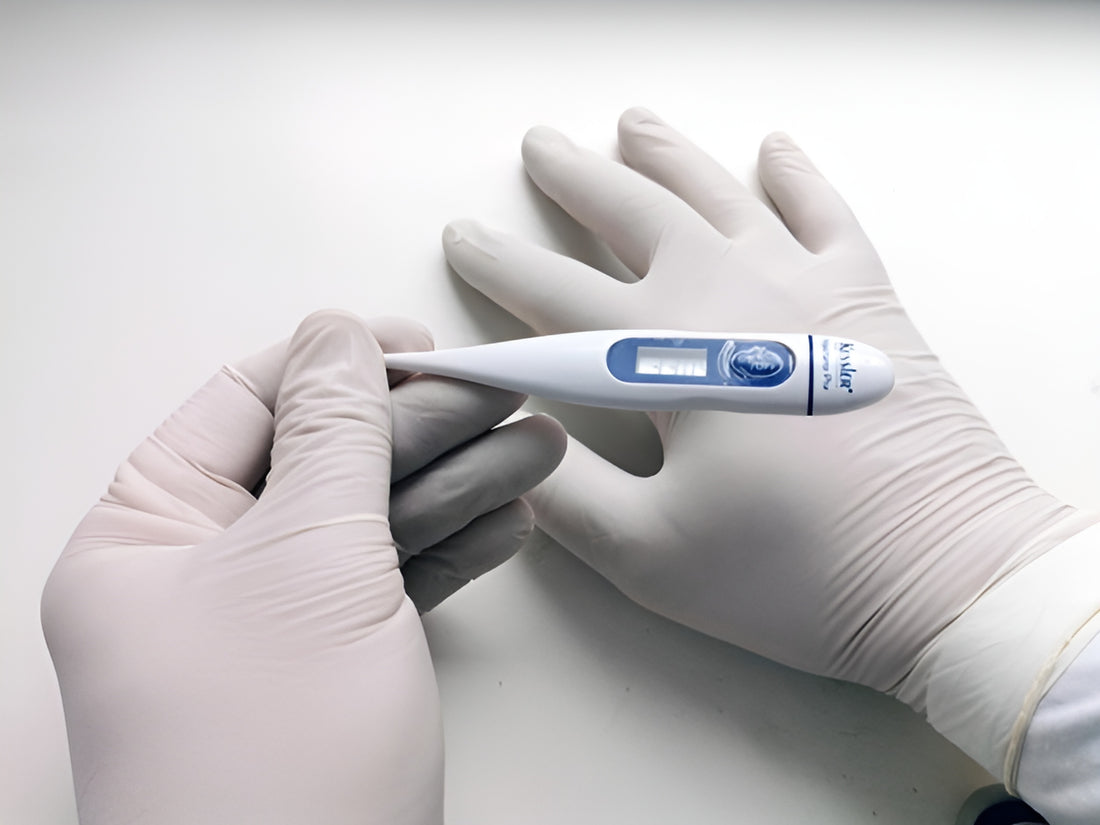If you're feeling a little feverish during cold and flu season, a low-grade fever might be the cause. But just what is a low-grade fever? In general, a fever is any body temperature above 98.6°F (though there are natural fluctuations between individuals). A low-grade fever is typically defined as a body temperature higher than 98.6°F and below 100.4°F, maintained over a 24-hour period. If your fever climbs outside this low-grade fever range, it is no longer considered mild and could be cause for concern, especially if it reaches 103° or higher.
Fevers help your body fight infection by increasing your body temperature to levels that bacteria and viruses cannot thrive in, so while they can be uncomfortable they can also help you recover from colds and the flu. Not all colds or flu will come with a fever, but some do, so it's a good idea to keep a thermometer in your medicine cabinet. It is important to monitor your temperature to ensure that it does not reach dangerous levels.
A low-grade fever might be one more on a long list of lousy cold and flu symptoms, but there are ways to recognize it quickly and treat it.
Symptoms of a Low-Grade Fever
Some signs of low-grade fever include the following:
- Headache
- Fatigue
- Sweating,
- Shivering
- Muscle fatigue or aches
If you have a low-grade fever you may experience all or just some of these fever symptoms, so take your temperature to be sure.
What is the Flu?
Broadly speaking, the flu often feels worse than a cold. You might experience the same symptoms but amplified. The two most prominent flu symptoms—and what sets it apart from a cold—are fever and pain. The fever accompanying flu is often low-grade, and typically remains under 103 degrees. Other flu symptoms include sore throat, chills, runny or stuffy nose, muscle fatigue and headaches. The flu can also develop into more serious conditions and complications, making it more dangerous than the average cold.
How to Treat a Cold or Flu with a Low-Grade Fever
Medicine with acetaminophen can help reduce fever symptoms. Be wary of combining acetaminophen and any other over-the-counter medications, which often contain acetaminophen as well. Adults should never exceed a total dose of 4000mg of acetaminophen in any 24-hour period.
You can also try holding a cool, damp cloth to your forehead or the back of your neck to relieve the heat of a low-grade fever. As with any cold or flu, drink plenty of fluids. If you're sweating more due to a low-grade fever, you might need to focus more on staying hydrated. Sports drinks can be particularly helpful in replacing lost electrolytes. Make sure you rest so that your body can focus its energy on healing and fighting infection.
You should monitor your temperature closely while you're sick and call a doctor if it climbs to 103° or higher. If your fever lasts longer than 2 days, no matter what the temperature, you should consult a doctor. Finally, you should call a doctor if you experience fever alongside any of these symptoms: stiff neck, shortness of breath, severe headache, extreme throat swelling, persistent vomiting, unusual skin rash or mental confusion.
Don't let your low-grade fever and other accompanying cold and flu symptoms get you down! Mucinex® Cold & Flu Fast Release Liquid Gels can help you get relief. Explore our fever relief tips and products, and feel better soon!








